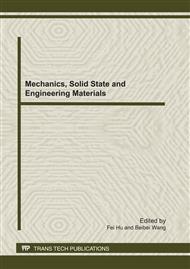p.394
p.400
p.406
p.412
p.418
p.423
p.429
p.434
p.440
A Method about Load Distribution of Rolling Mills Based on RBF Neural Network
Abstract:
Rolling mills process is too complicated to be described by formulas. RBF neural networks can establish finishing thickness and rolling force models. Traditional models are still useful to the neural network output. Compared with those finishing models which have or do not have traditional models as input, the importance of traditional models in application of neural networks is obvious. For improving the predictive precision, BP and RBF neural networks are established, and the result indicates that the model of load distribution based on RBF neural network is more accurate.
Info:
Periodical:
Pages:
418-422
Citation:
Online since:
July 2011
Authors:
Price:
Сopyright:
© 2011 Trans Tech Publications Ltd. All Rights Reserved
Share:
Citation:


